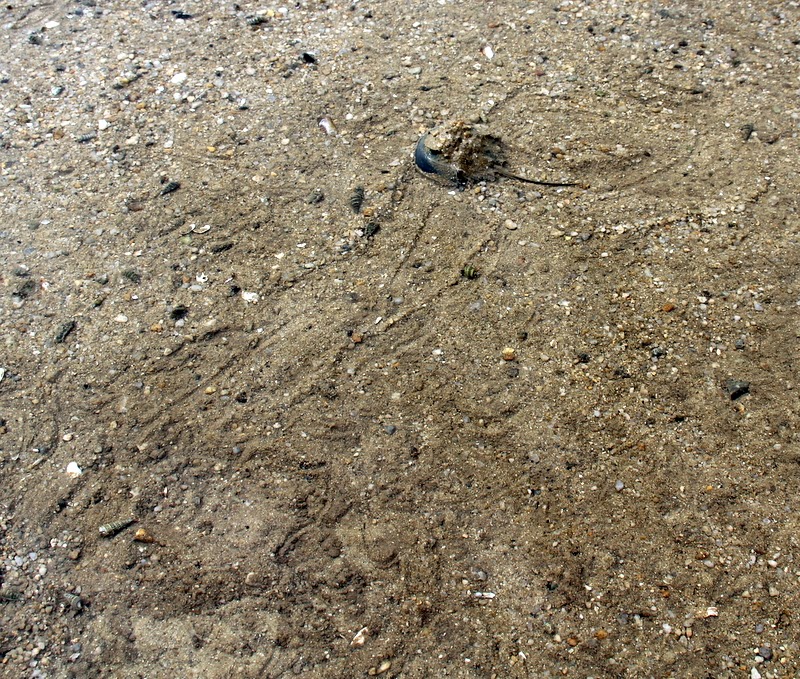This post is one in a series of posts which compares the
depositional environment of the late Jurassic lithographic limestones at
Solnhofen in Germany based on extracts from Solnhofen: A Study in Mesozoic
Palaeontology with observations
made at a modern inter-tidal mudflat at Ha Pak Nai, Deep Bay, New Territories,
Hong Kong and proposes an inter-tidal mudflat origin for the examples cited.
This post compares
references of juvenile horseshoe
crabs found at Solhofen - Eichstatt spending short periods out of the water
with photographs of sub-aerial foraging and movement by juvenile horseshoe
crabs in their natural habitat on the intertidal mudflats at Ha Pak Nai.
Extract from: Solnhofen: A Study in
Mesozoic Palaeontology
Species: Mesolimulus
walchi
“Limulids burrow in
the mud to shallow depths in search of small invertebrates for food. They may spend short periods out of the
water, and they are particularly tolerant to fluctuations in the salinity
or temperature of the water.” (Barthel et al - Page 140).
Comments on
juvenile horseshoe crabs spending short periods out of the water in Hong Kong
There are four species of horseshoe
crab living today, Limulus polyphemus,Tachypleus
tridentatus, Tachypleus gigas and
Carcinoscorpius rotundicauda. L.
polyphemus occurs along the east
coast of the USA and Mexico. The other three species occur in South-East Asia. T. tridentatus and C. rotundicauda occur in Hong Kong.
In Hong Kong juvenile horseshoe crabs
forage on intertidal mudflats and in areas in and around mangroves.
The foraging activity may take place
in shallow water in stream beds or in the pools of water that form between
seagrass bed mounds or sub-aerially when the tide has fully receded. Sub-aerial
foraging and movement is normal practice
for juveniles of both T. tridentatus
and C. rotundicauda and the juveniles
can spend extended periods of time engaged in sub-aerial activity, as long as
the surface of the sediment is moist or they are or they are not exposed for
prolonged periods to high temperatures or direct sunlight. In addition, quite a
lot of foraging activity is conducted on the surface of the sediment, not
buried in it.
Photographic evidence from Ha Pak Nai.
Juvenile T. tridentatus running across the surface of an intertidal mudflat.
Juvenile T. tridentatus foraging, then walking across the surface of an intertidal mudflat.
Sub-aerial juvenile T. tridentatus foraging trails, made on the surface of an intertidal mudflat.
References
Barthel, K.W., Swinburne,
N.H.M., and Conway Morris, S. (1994). Solnhofen: A Study in Mesozoic
Palaeontology. Cambridge University Press, Cambridge.











No comments:
Post a Comment